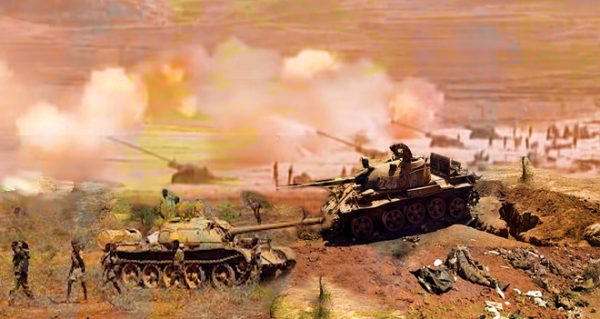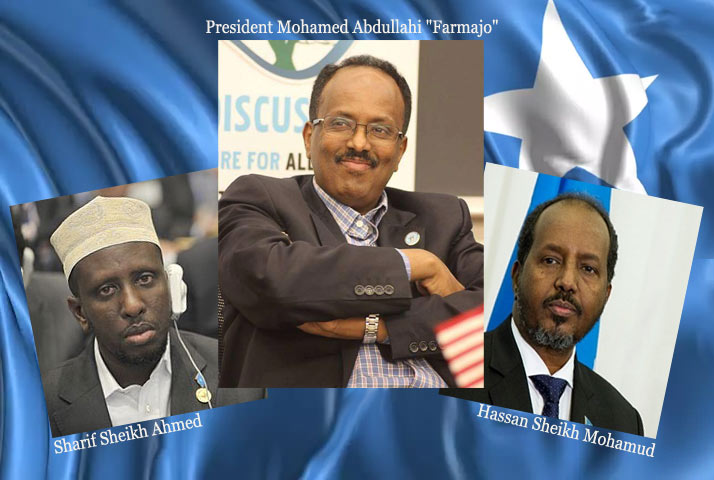The Next EDA-EPDP Confrontation
 In its January 20, 2011 Central Committee meeting, the Eritrean Democratic Alliance (EDA), an umbrella group of exiled Eritrean opposition organizations, will decide on the status of the Eritrean People’s Democratic Party (EPDP), one of its member groups, vis-à-vis the latter’s October 31, 2010 decision to expel a number of its members, including members of the leadership, from the organization. The question is: who represents the EPDP? And how many individuals should represent the EPDP?
In its January 20, 2011 Central Committee meeting, the Eritrean Democratic Alliance (EDA), an umbrella group of exiled Eritrean opposition organizations, will decide on the status of the Eritrean People’s Democratic Party (EPDP), one of its member groups, vis-à-vis the latter’s October 31, 2010 decision to expel a number of its members, including members of the leadership, from the organization. The question is: who represents the EPDP? And how many individuals should represent the EPDP?
On January 2, 2011, Mr. Abdella Mahmoud, the chair of EDA’s Central Committee, called for a central committee meeting to discuss, among other things, the “split” within EPDP and the membership status of its two wings. At issue are the nature of the split, the EDA rules dealing with splits, and the precedents which have been set in previous occurrences of splits.
EPDP: The Merger
On May 25, 2009, the Eritrean Democratic Resistance Movement of Gash-Setit united with the Eritrean People’s Party (EPP), with the latter retaining the name of the united organizations. On January 1, 2010, the EPP merged with two other parties, the Eritrean Democratic Party (EDP) and the Eritrean People’s Movement (EPM) to found the Eritrean People’s Democratic Party (EPDP). This was achieved in a “merger conference” in December 31, 2009. EPDP elected a transitional leadership until it holds its first congress.
The first question is: is the EPDP a merger of three organizations or of four organizations? Since EPDP didn’t hold its first congress since last year, was it, technically speaking, three organizations working in a united front, or one organization, albeit one which is yet to hold its first congress?
In its own FAQ, the EPDP’s website (harnnet.org) refers to EPDP as “a product of three political organizations, Eritrean People’s Party, Eritrean Democratic Party, and Eritrean People’s Movement, who on December 31, 2009 achieved unity.” Thus, at first glance, it appears that EPDP is an outcome of the merger of three political organizations.
EPDP: The Split
On October 31, 2010, the EPDP expelled members of the party whom it described as “members of the former EPM” and individuals who were not sufficiently committed to EPDP nor were willing to abide by its decisions, particularly on the issue of the National Conference for Democratic Change (NCDC) which was held in Addis Abeba, Ethiopia in late July and early August of 2010.
Those who were expelled say that since the three organizations were dissolved in December 31, 2009, they should not be described as “former EPM members” but members of EPDP—particularly in light of the fact that some of those who have joined them were never members of EPM but members of (including senior members) EPDP.
EDA: Recent History
Splitting and forming blocs are not new to the Eritrean Democratic Alliance:
- In 2002, the Eritrean Liberation Front-Revolutionary Council (ELF-RC), split into two. For a while, both retained the name until one side changed its name to the Eritrean National Congress (ENC.) Both were given membership in the EDA.
- In 2005, the Eritrean Co-operative Party “united” with the Eritrean Democratic Resistance Movement of Gash-Setit and the Eritrean Liberation Front-United Organization (ELF-UO) to form the Eritrean Congress Party. The union was short-lived: among other things, Gash-Setit became part of EPP which later merged with EDP and EPM and formed the EPDP.
- In 2006, the Eritrean National Congress (ENC) “united” with a splinter group of the Eritrean People’s Movement (EPM) and the Eritrean Revolutionary Democratic Front (ERDF, better known as Se.De.Ge.E.) to found the Eritrean National Salvation Front (ENSF) which is a member of the Eritrean Democratic Alliance. Subsequently, ERDF (Se.De.Ge.E.) pulled out of ENSF. The wing that split from the EPM earlier and joined the ENSF chose not to participate in the ENSF’s congress and is technically out of the EDA.
The EPDP is arguing that the EDA should follow its own precedent: the expulsion of the “former EPM members” from EPDP is no different than the withdrawal of ERDF from the National Salvation. EPDP’s membership in the EDA should not be affected, argues EPDP, and those who split from it should be required to hold a congress and apply for membership to the EDA.
The EDA is arguing that there has been no precedent of an organization that had a full merger, outlined a shared political programme, and then split.
Doesn’t the EDA charter have a mechanism to address developments such as the one it’s facing? Gedab News posed this question to an EDA official. “It does,” he answered, “it is for the affected party to present its case to the Central Committee. The problem is the brothers at the EPDP boycott events then complain that they were excluded.”
It is not clear that the EPDP will actually attend the Central Committee meeting of the EDA. There doesn’t seem to be a great deal of goodwill between the EDA and the EPDP. Most EDA members consider EPDP a spoiler which is on the wrong side of all the important issues, particularly the national conference; meanwhile, the EPDP considers the EDA a weak alliance of weak organizations.




Awate Forum